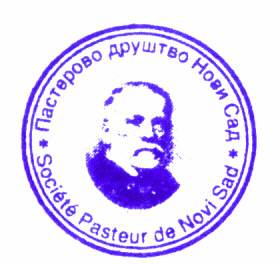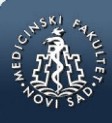md-medicaldata
Main menu:
- Naslovna/Home
- Arhiva/Archive
- Godina 2024, Broj 1
- Godina 2023, Broj 3
- Godina 2023, Broj 1-2
- Godina 2022, Broj 3
- Godina 2022, Broj 1-2
- Godina 2021, Broj 3-4
- Godina 2021, Broj 2
- Godina 2021, Broj 1
- Godina 2020, Broj 4
- Godina 2020, Broj 3
- Godina 2020, Broj 2
- Godina 2020, Broj 1
- Godina 2019, Broj 3
- Godina 2019, Broj 2
- Godina 2019, Broj 1
- Godina 2018, Broj 4
- Godina 2018, Broj 3
- Godina 2018, Broj 2
- Godina 2018, Broj 1
- Godina 2017, Broj 4
- Godina 2017, Broj 3
- Godina 2017, Broj 2
- Godina 2017, Broj 1
- Godina 2016, Broj 4
- Godina 2016, Broj 3
- Godina 2016, Broj 2
- Godina 2016, Broj 1
- Godina 2015, Broj 4
- Godina 2015, Broj 3
- Godina 2015, Broj 2
- Godina 2015, Broj 1
- Godina 2014, Broj 4
- Godina 2014, Broj 3
- Godina 2014, Broj 2
- Godina 2014, Broj 1
- Godina 2013, Broj 4
- Godina 2013, Broj 3
- Godina 2013, Broj 2
- Godina 2013, Broj 1
- Godina 2012, Broj 4
- Godina 2012, Broj 3
- Godina 2012, Broj 2
- Godina 2012, Broj 1
- Godina 2011, Broj 4
- Godina 2011, Broj 3
- Godina 2011, Broj 2
- Godina 2011, Broj 1
- Godina 2010, Broj 4
- Godina 2010, Broj 3
- Godina 2010, Broj 2
- Godina 2010, Broj 1
- Godina 2009, Broj 4
- Godina 2009, Broj 3
- Godina 2009, Broj 2
- Godina 2009, Broj 1
- Supplement
- Galerija/Gallery
- Dešavanja/Events
- Uputstva/Instructions
- Redakcija/Redaction
- Izdavač/Publisher
- Pretplata /Subscriptions
- Saradnja/Cooperation
- Vesti/News
- Kontakt/Contact
 Pasterovo društvo
Pasterovo društvo
- Disclosure of Potential Conflicts of Interest
- WorldMedical Association Declaration of Helsinki Ethical Principles for Medical Research Involving Human Subjects
- Committee on publication Ethics
CIP - Каталогизација у публикацији
Народна библиотека Србије, Београд
61
MD : Medical Data : medicinska revija = medical review / glavni i odgovorni urednik Dušan Lalošević. - Vol. 1, no. 1 (2009)- . - Zemun : Udruženje za kulturu povezivanja Most Art Jugoslavija ; Novi Sad : Pasterovo društvo, 2009- (Beograd : Scripta Internacional). - 30 cm
Dostupno i na: http://www.md-medicaldata.com. - Tri puta godišnje.
ISSN 1821-1585 = MD. Medical Data
COBISS.SR-ID 158558988
CLINICAL USE OF PINP AND βCTX AS BONE TURNOVER MARKERS IN NOVEL TREATMENT OF OSTEOPOROSIS
KLINIČKA UPOTREBA MARKERA KOŠTANOG PROMETA PINP AND βCTX U SAVREMENOJ TERAPIJI OSTEOPOROZE
Authors
Jovanović Ljiljana1, Vasić Lazić Marija1, Šijan Gobeljić Mirjana2
1Institut za medicinsku biohemiju, Vojnomedicinska akademija, Crnotravska 17, Beograd
2Visoka medicinska škola strukovnih studija ˝Milutin Milanković˝, Crnotravska 27, Beograd
UDK: 616.71-007.234-074
The paper was received / Rad primljen: 13.09.2018.
Accepted / Rad prihvaćen: 03.10.2018.
Correspondence to:
Mr Ph Ljiljana Jovanović
Institut za medicinsku biohemiju Vojnomedicinska akademija
Beograd, Crnotravska 17
tel: 064/3551460
e-mail: biohemicar@ymail.com
Abstract
Bone turnover markers (BTMs) are increasingly being evaluated for their role in detection of bone loss, assesment of fracture risk, selecting the most appropriate therapy, assessment and following of therapeutic response. During the last decade several new remedies with special mechanisms of action, as denosumab, cathepsin K inhibitors and anti-sclerostin therapy, have been tested in the treatment of osteoporosis. The clinical chal¬lenge will be to select medications with different effects on bone resorption and formation, alone or in combination, in order to treat osteoporosis patients most effectively. Therefore, the aim of our analysis of recently published clinical trials was quantifying differences between teriparatide and new remedies (denosumab, romosozumab, blosozumab, odanacatib) effects on bone mineral density and the most widely used BTMs such as procollagen type I N propeptide (PINP) and β croos-linked C-telopeptides (βCTX). Founded differences may contribute not only to better understanding of relationship between various mechanisms of action of these drugs and their influence on the level of BTMs, but also to their more appropriate choice in the treatment of osteoporosis.
Keywords:
osteoporosis, bone turnover markers, P1NP, βCTX, teriparatide, denosumab, romosozumab, blosozumab, odanacatib
Sažetak
Biomarkeri koštanog prometa se sve vise proučavaju zbog svoje uloge u proceni gubitka koštane mase i rizika od frakture kostiju, zatim učestvuju prilikom izbora odgovarajuće terapije i tokom praćenja terapeutskog odgovora. U poslednjoj deceniji, nekoliko novih lekova sa specifičnim mehanizmom delovanja kao što su denosumab, katepsin K inhibitori i anti-sklerostn terapija, testirani su u tretmanu osteoporoze. Klinički izazov predstavlja odabir pojedinačnih lekova ili njihovih kombinacija za efikasan tretman pacijenata obolelih od osteoporoze zbog njihovog različitog delovanja na procese formiranja i razgradnje kostiju. Cilj našeg proučavanja nedavno objavljenih kliničkih studija bilo je određivanje razlika između teriparatida i novijih lekova (denosumaba, romosozumaba, blosozumaba, odanacatiba), kao i njihovog uticaja na gustinu kostiju i markere koštanog prometa, kao što su N-terminalni propeptid kolagena tipa I (eng. procollagen type I N propeptide -PINP) i C-terminalni telopeptid kolagena tipa I (β croos-linked C-telopeptides- βCTX). Pronađene razlike mogu doprineti, kako boljem razumevanju odnosa između različitih mehanizama dejstva proučavanih lekova i njihovog uticaja na koncetraciju markera koštanog prometa, tako i na primenu odgovarajućeg tretmana u lečenju osteoporoze.
Ključne reči:
osteoporoza, marker koštanog prometa, P1NP, βCTX, teriparatid, denosumab, romosozumab, blosozumab, odanacatib
References:
- Bauer DC, Garnero P, Harrison SL, Cauley JA, Eastell R, Ensrud KE et al. Osteoporotic Fractures in Men (MrOS) Research Group.Biochemical markers of bone turnover, hip bone loss, and fracture in older men: the MrOS study. J Bone Miner Res. 2009;24(12):2032-8.
- Farahmand P, Marin F, Hawkins F, Möricke R, Ringe JD, Glüer CC et al. Early changes in biochemical markers of bone formation during teriparatide therapy correlate with improvements in vertebral strength in men with glucocorticoid-induced osteoporosis. OsteoporosInt.2013;24:2971–2981.
- Geusens P. New insights into treatment of osteoporosis in postmenopausal women. RMD Open.2015;1(Suppl1):e000051.
- Civitelli R, Armamento-Villareal R, Napoli N. Bone turnover markers: understanding their value in clinical trials and clinical practice. Osteoporos Int. 2009;20(6):843-51
- Krege JH, Lane NE, Harris JM, Miller PD. PINP as a biological response marker during teriparatide treatment for osteoporosis. Osteoporos Int. 2014;25(9):2159-71.
- Moore AE, Blake GM, Taylor KA, Ruff VA, Rana AE, Wan X et al.. Changes observed in radionuclide bone scans during and after teriparatide treatment for osteoporosis. Eur J Nucl Med Mol Imaging. 2012; 39(2):326-36.
- Frost ML, Moore AE, Siddique M, Blake GM, Laurent D, Borah B et al. ¹⁸F-fluoride PET as a noninvasive imaging biomarker for determining treatment efficacy of bone active agents at the hip: a prospective, randomized, controlled clinical study. J Bone Miner Res. 2013;28(6):1337-47.
- Yu EW, Kumbhani R, Siwila-Sackman E, DeLelys M, Preffer FI, Leder BZ et al. Teriparatide (PTH 1-34) treatment increases peripheral hematopoietic stem cells in postmenopausal women. J Bone Miner Res. 2014;29(6):1380-6.
- Muschitz C, Kocijan R, Fahrleitner-Pammer A, Pavo I, Haschka J, Schima W et al. Overlapping and continued alendronate or raloxifene administration in patients on teriparatide: effects on areal and volumetric bone mineral density--the CONFORS Study. J Bone Miner Res. 2014;29(8):1777-85.
- Padhi D, Jang G, Stouch B, Fang L, Posvar E. Single-dose, placebo-controlled, randomized study of AMG 785, a sclerostin monoclonal antibody. J Bone Miner Res. 2011;26(1):19-26.
- McClung MR, Grauer A, Boonen S, Bolognese MA, Brown JP, Diez-Perez A et al. Romosozumab in postmenopausal women with low bone mineral density. N Engl J Med. 2014;370(5):412-20.
- Padhi D, Allison M, Kivitz AJ, Gutierrez MJ, Stouch B, Wang C et al. Multiple doses of sclerostin antibody romosozumab in healthy men and postmenopausal women with low bone mass: a randomized, double-blind, placebo-controlled study. J Clin Pharmacol. 2014;54(2):168-78.
- McColm J, Hu L, Womack T, Tang CC, Chiang AY. Single- and multiple-dose randomized studies of blosozumab, a monoclonal antibody against sclerostin, in healthy postmenopausal women. J Bone Miner Res. 2014;29(4):935-43.
- Recker RR, Benson CT, Matsumoto T, Bolognese MA, Robins DA, Alam J et al. A randomized, double-blind phase 2 clinical trial of blosozumab, a sclerostin antibody, in postmenopausal women with low bone mineral density. J Bone Miner Res. 2015;30(2):216-24.
- Gatti D, Viapiana O, Fracassi E, Idolazzi L, Dartizio C, Povino MR et al. Sclerostin and DKK1 in postmenopausal osteoporosis treated with denosumab. J Bone Miner Res. 2012 ;27(11):2259-63.
- Papapoulos S, Chapurlat R, Libanati C, Brandi ML, Brown JP, Czerwiński E et al. Five years of denosumab exposure in women with postmenopausal osteoporosis: results from the first two years of the FREEDOM extension. J Bone Miner Res. 2012;27(3):694-701.
- McClung MR, Lewiecki EM, Geller ML, Bolognese MA, Peacock M, Weinstein RL et al. Effect of denosumab on bone mineral density and biochemical markers of bone turnover: 8-year results of a phase 2 clinical trial. Osteoporos Int. 2013; 24(1):227-35.
- Bone HG, Chapurlat R, Brandi ML, Brown JP, Czerwinski E, Krieg MA et al. The effect of three or six years of denosumab exposure in women with postmenopausal osteoporosis: results from the FREEDOM extension. J Clin Endocrinol Metab. 2013;98(11):4483-92.
- Papapoulos S, Lippuner K, Roux C, Lin CJ, Kendler DL, Lewiecki EM et al. The effect of 8 or 5 years of denosumab treatment in postmenopausal women with osteoporosis: results from the FREEDOM Extension study. Osteoporos Int. 2015; 26(12):2773-83.
- Bone HG, McClung MR, Roux C, Recker RR, Eisman JA, Verbruggen N et al. Odanacatib, a cathepsin-K inhibitor for osteoporosis: a two-year study in postmenopausal women with low bone density. J Bone Miner Res. 2010; 25(5):937-47.
- Eisman JA, Bone HG, Hosking DJ, McClung MR, Reid IR, Rizzoli R et al. Odanacatib in the treatment of postmenopausal women with low bone mineral density: three-year continued therapy and resolution of effect. J Bone Miner Res. 2011;26(2):242-51.
- Nakamura T, Shiraki M, Fukunaga M, Tomomitsu T, Santora AC, Tsai R et al. Effect of the cathepsin K inhibitor odanacatib administered once weekly on bone mineral density in Japanese patients with osteoporosis--a double-blind, randomized, dose-finding study. Osteoporos Int. 2014;25(1):367-76.
- Shah AD, Shoback D, Lewiecki EM. Sclerostin inhibition: a novel therapeutic approach in the treatment of osteoporosis. Int J Womens Health. 2015;7:565-80.
- Gallagher JC, Tella SH. Prevention and treatment of postmenopausal osteoporosis. J Steroid Biochem Mol Biol. 2014 ; 142: 155–170.
- Chapurlat RD.Odanacatib: a review of its potential in the management of osteoporosis in postmenopausal women. Ther Adv Musculoskelet Dis. 2015;7(3):103-9.
PDF Jovanovi’ Lj. et al. • MD-Medical Data 2018;10(3): 131-134MD-Medical Data 2018;10(3): 131-134
 Medicinski fakultet
Medicinski fakultet